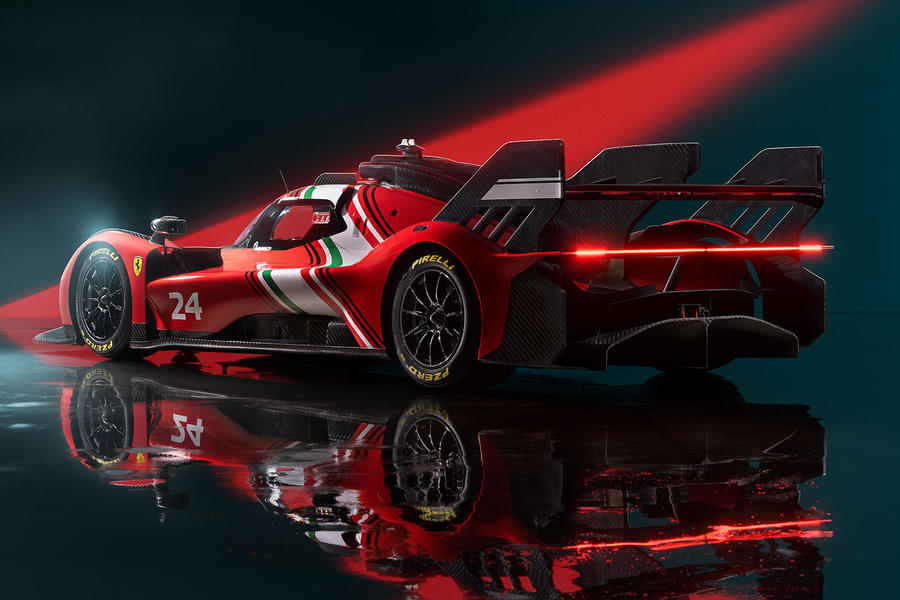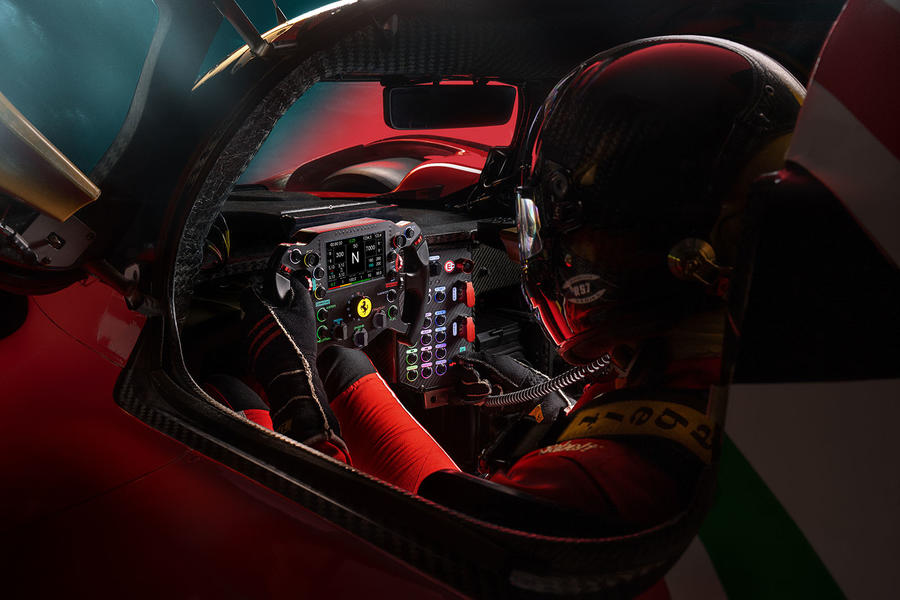The Modificata is based on the 499P endurance racer that claimed victory at La Sarthe this year
Limited-run, 777bhp track car for “gentleman drivers” is the most expensive Ferrari yet
Ferrari has made its Le Mans-winning 499P prototype racer available for purchase as a no-holds-barred track toy, costing £4.6m and equipped with an 777bhp hybrid V6.
Based on the 499P endurance racer that claimed victory at La Sarthe this year (Ferrari’s first top-flight endurance outing in 50 years), the “strictly limited” track car is reserved for non-competitive use by “gentleman drivers”.
Speaking at its Mugello debut, the firm’s non-homologated vehicle leader Manuela Cecconi said it has been designed “for customers to enjoy the thrill of a racing prototype”, adding that it is “the firm’s most exclusive project”, with each car costing €5.1m (£4,620,600), excluding VAT.
It has been designed for a “very select clientele”, each of whom will have access to the car for two years – along with support from the firm’s F1 maintenance team.

It spearheads the brand’s new Sport Prototipi Clienti programme, which will see customers able to purchase modified versions of Ferrari’s race cars, though the firm did not comment on what subsequent Prototipi Clienti cars will be.
Power comes from the same mid-rear mounted 3.0-litre hybridised V6 as the 499P, but the 499P Modificata’s engine has been “pushed further” to produce a combined 697bhp. An additional 80bhp is on offer for seven seconds at a time, after the driver presses a red “push to pass” button mounted behind the steering wheel.
The race car is limited by Balance of Performance regulations to a total output of 670bhp.
A Formula 1-derived 800V electric motor drives the front wheels, and can be charged under deceleration and braking.

The firm remains tight-lipped on its 0-62mph time and top speed, but Ferrari racing driver Antonio Fuoco achieved 213mph during testing of the 499P racer, and it is expected that the more powerful 499P Modificata will at least match this figure.
Ferrari said it was a “huge challenge” to engineer the powertrain so that the 499 Modificata’s on-track behaviour is accessible to customers with less experience. The engine mapping is said to have been tuned to easily manage torque, even at the car’s limit.
While the firm did not comment on torque output, it has revealed that the electric motor produces 132lb ft, and in the 296 GT3, the V6 produces 525lb ft, meaning the two together could produce as much around 660lb ft in the Modificata.
During the development of its bespoke Pirelli tyres, Cecconi said the firm prioritised “vehicle dynamics and powertrain delivery management”, meaning they are designed to withstand long, continuous runs with a bespoke tread pattern and are easier to manage during warm-up.

Not being homologated, its output is not restricted by Balance of Performance constraints, which allowed Ferrari to make the car “more accessible” for less experienced drivers, chiefly through aerodynamics.
The firm’s ambassador driver Olivier Beretta commented on how “surprised” he was at how well the car performed “despite how far (the firm) pushed it.”
Designed by Flavio Manzoni, renowned for sketching the F12 Berlinetta and Monza SP1, it relies heavily on ducts, channels and vents to smooth airflow over its cab-back body.
At the front, thin headlamps sit above a carbonfibre front splitter, with a flat bonnet and single windscreen wiper that sits on top of a curved windscreen.
Meanwhile, it gets a bumper-width light bar at the back, as well as a large downforce-inducing rear spoiler, carbonfibre bumpers that leaves the wheels and suspension exposed to the elements, and an air intake (also carbonfibre) that extends the length of the rear glasshouse. This cools both the V6 engine and the battery.

Its body sits on a carbonfibre monocoque chassis and F1-inspired push-rod suspension, which, according to Ferrari, has been “designed to maximise driving thrills and ensure that the car behaves predictably in all conditions.”
The engine itself is load-bearing, forming a part of the car’s backbone and increasing its torsional rigidity.
Inside, it gets a digital rear camera, fixed bucket seats, an adjustable pedal rack, and a racing steering wheel.
Source: Autocar
